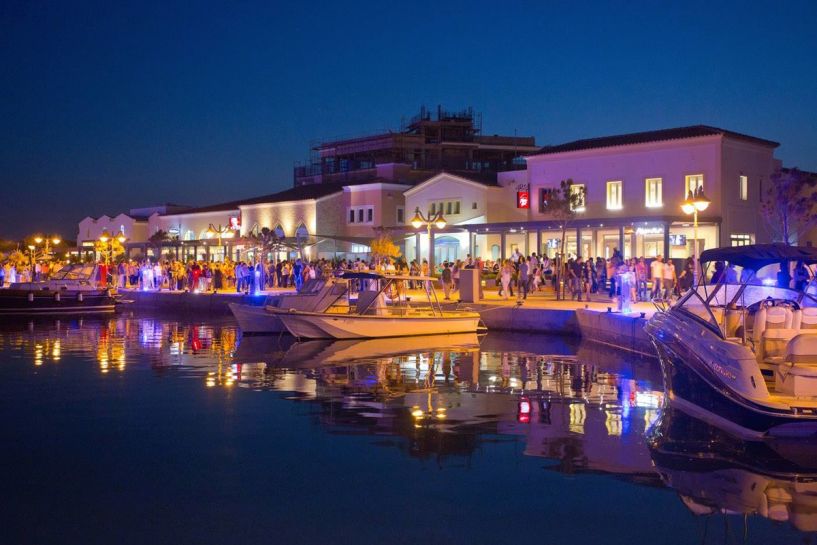Over the course of its four thousand year history, many groups have made their mark upon the Cyprus port city of Limassol. Though very little is known about the city’s founding, Limassol has played host to King Richard the Lionheart during the Third Crusade in the 12th century, and has been passed from the Anglo-Normans, to the French, to the Ottomans, to the Venetians and eventually to the British. Today, the Republic of Cyprus is a self-governing country, except for the British-controlled Sovereign Base Areas of Akrotiri and Dhekelia.
Limassol’s complicated and ancient past means that there are layers of history to explore in this Mediterranean port city. Famous for its ancient ruins as well as its sunny beaches (which you can enjoy during Limassol’s eight-month summer), Limassol offers a mix of old and new in a beautiful seaside setting.
The Castles
Limassol is home to two imposing castles – Limassol Castle and Kolossi Castle. The former is located near the old harbour in the historical centre of Limassol. Archaeological investigations show that this structure has had a long and complicated history.
Originally the site of an Early Christian basilica, the original Limassol Castle is thought to have been erected in the 12th century. According to tradition, Limassol Castle is where Richard the Lionheart married Berengaria of Navarre and crowned her Queen of England in 1191. Over the centuries, the castle was damaged as Cyprus changed hands. In the 16th century, the Ottoman Turks demolished the castle and reincorporated parts of it into the structure you see today: a thick-walled fortress of white stone. The first floor and underground chambers were converted to prison cells, which were in use as late as 1950.
The latter, Kolossi Castle, is a former Crusader stronghold about nine miles west of the city centre. During the Middle Ages the castle was very strategically important, and once housed facilities for the production of sugar, one of Cyprus’s most valuable exports at the time. If you visit the castle today, you will find a three-storey keep that still bears the coat of arms of its former inhabitants.
[mapsmarker marker=”132″]
Kourion
If you’d like go even further back in time, visit the ruins of Kourion, adjacent to the city of Limassol, which has expanded to meet it. This ancient Greek city has a history that goes back as far as 4500 BC. Today you can stroll among the excavated ruins, which are mostly from the Hellenistic and Late Roman periods. Some of the spectacular remains still visible include a Greco-Roman open-air theatre, forum and baths and a complex of elite residences paved with spectacular mosaics.
Limassol Promenade
After a little trip through history, take in the scenery along the Limassol Promenade. This palm tree-lined beachfront walk is full of shops and restaurants on one side, and a spectacular sea view on the other. Average high temperatures stay above 20°C well into November, so you’ll find it a warm walk most months of the year.
Some attractions along the Promenade include the Limassol Zoo, where you will find monkeys, lions and ostriches, and the Limassol Marina, the “old port” which is now home to luxury yachts and homes.
How to Get to Limassol
The most direct way to get to Limassol from London is to fly to Larnaca Airport, about 40 miles east of Limassol. EasyJet and Aegean both offer flights out of London Gatwick, with total flight time equalling about four and a half hours.
Once you’ve landed at Larnaca airport, you can hop on the Limassol Airport Express bus, which can take you directly to the city centre. You can also rent a car with any of the companies at Larnaca Airport (such as Avis and Europcar) and take the A1 along the coast to Limassol.
Alternatively, you can book a private or shared ride with Shuttle Direct, which offers low-cost Larnaca airport transfers as well as transfers to and from hundreds of other airports across Europe. With just a few clicks, you can arrange a comfortable, hassle-free transfer online and just focus on relaxing!
[mapsmarker marker=”133″]
Where to Stay
Le Village Hotel – If you’re looking for a clean, comfortable, reasonably priced base from which to explore Limassol’s fabulous beaches and other attractions, look into Le Village Hotel. Furnished in nautical blue and white, this family-run hotel is located in the centre of Limassol, with walking access to the old harbour and Limassol Castle.
Harmony Bay Hotel – Just a stone’s throw from the sea, this three-star hotel boasts beautiful views and quick beach access. The Harmony Bay Hotel is located right on the Promenade, so there are plenty of restaurants and bars only 100 metres away. With clean, modern rooms and a bus stop right outside your front door, Harmony Bay is the perfect combination of comfort and convenience.
GrandResort – When you stay at the GrandResort, you get access to a private beach, tropical gardens, seven restaurants, a wellness centre and two pools. This luxurious five star hotel will pamper you with massages, plush bathrobes and a balcony with Mediterranean views. If you’re travelling with the whole family, the GrandResort has a playground, a paddling pool and a kid’s club with dedicated staff to look after children aged four to twelve years.



